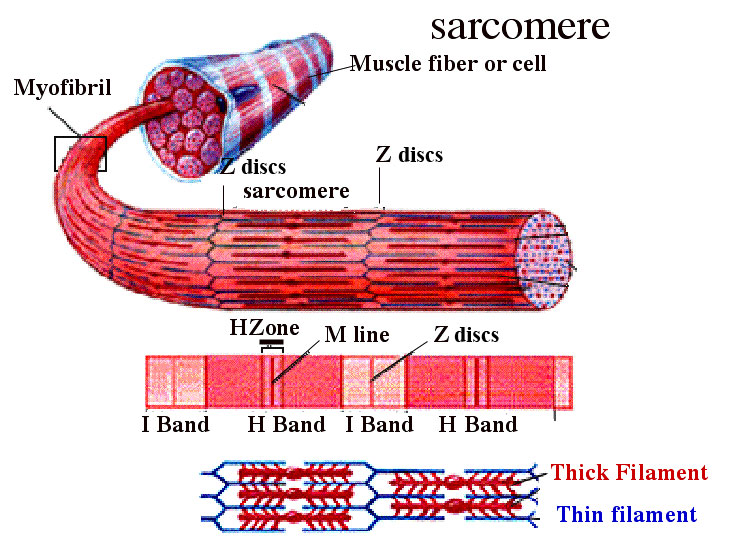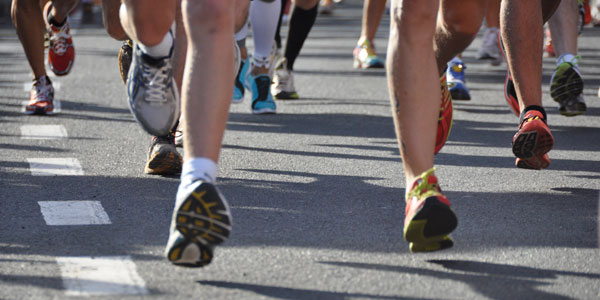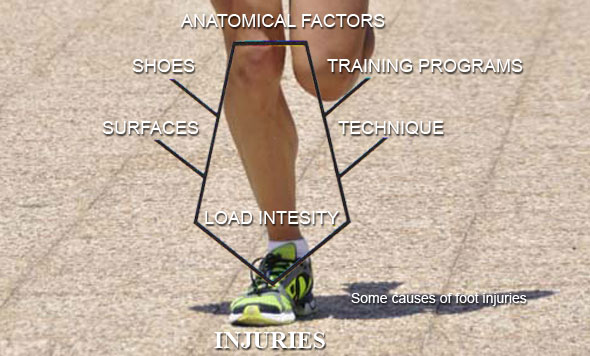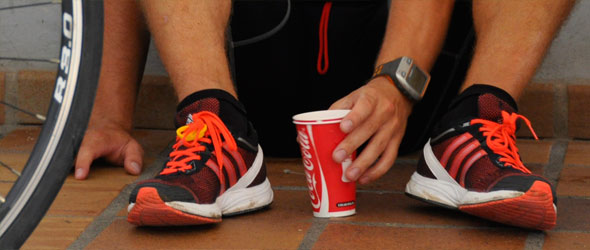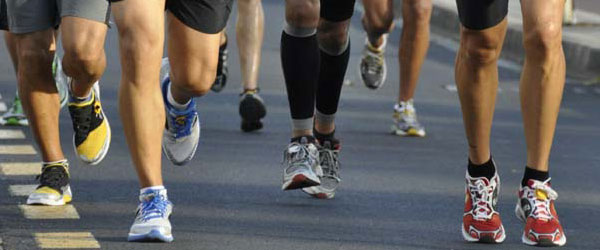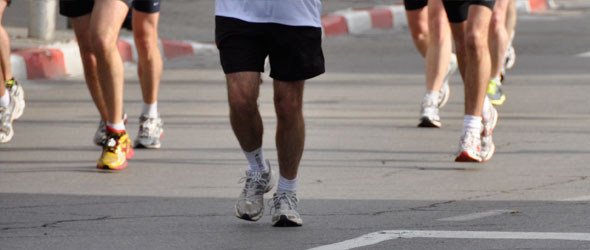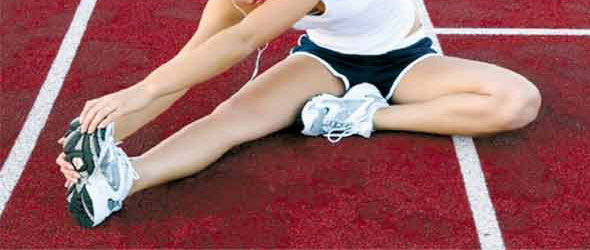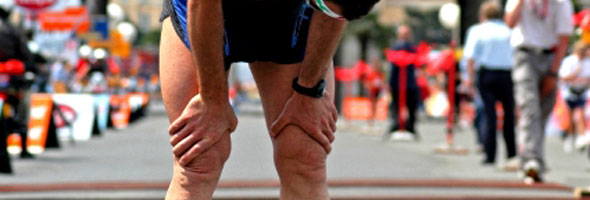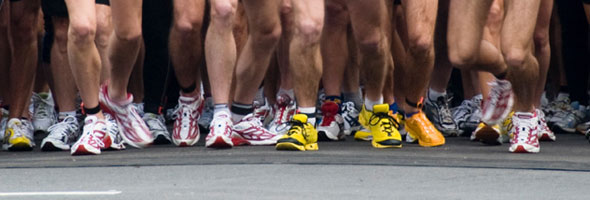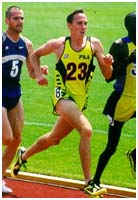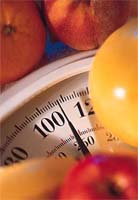This article will discuss muscle soreness after training, as well as a few preventative measures and treatment of the ailment. [Read more…]
Anatomical Factors of Running
On landing, the foot distributes the weight and prepares to propel the leg forward via various mechanisms that contribute to the movement of running. Before this takes place the normal anatomical structure of the foot can go through various deviations which are appropriate to each individual. [Read more…]
Causes of Foot Injuries
The causes of foot injuries in running are factors which are influenced by the distribution of load, including anatomical factors, body weight, shoes, surface, training program and technique. [Read more…]
Rice for Injury Treatment
RICE is known as the most effective treatment of injuries. Rest; Ice; Compression; Elevation [Read more…]
How to regain your fitness
How to regain your fitness after injury or illness
The quickest way to get your fitness back after a lay-off is to find a three-minute hill.
Let’s say that things are going really well with your training. You’re steadily getting fitter and racing faster as you get ready for that big race in a couple of months. But then – disaster strikes! Your Achilles tendon flares up, or you develop a monstrous case of the flu, or work pressures get out of control. Whatever the reason, you can’t train at all for a couple of weeks, and when you start working out again, there are only two to three weeks left before your key competition [Read more…]
Recurrent Hamstring injuries
 This article is provided by Teri Burgess, resident Physiotherapist from Time-to-Run Cape Town, covering Recurrent Hamstring injuries. Teri is also the contributor of the hugely popular article, covering the 5 most common running injuries, aptly named The BIG Five.
This article is provided by Teri Burgess, resident Physiotherapist from Time-to-Run Cape Town, covering Recurrent Hamstring injuries. Teri is also the contributor of the hugely popular article, covering the 5 most common running injuries, aptly named The BIG Five.
Picture it… you’re gliding up your favourite long hill, breathing well, legs feeling strong. You reach the top, and happily you start running downhill. Everything is perfect: it is a beautiful morning, that hill has never felt easier, and you are even sweating less than usual. Suddenly it all changes in one simple step. You feel a sharp pulling pain in the back of your thigh, and you are reduced to a hobble – all the way home. While you do contemplate throwing your running shoes away, you are also puzzled. You can’t think of anything you have done incorrectly to cause this injury. You have been increasing your training gradually, without doing any major speed or hill sessions. You have even been stretching a bit, and certainly felt no niggling pain or stiffness in the muscle up until now. Then you remember that this hamstring gave you problems last year, and the year before, also without warning. [Read more…]
Treatment of recurrent hamstring strains
Injuries to the hamstrings are the most common soft tissue injuries to the thigh. Symptoms of a hamstring strain include pain, muscle spasm, swelling, and inhibition of movement.
Treatment of acute hamstring injury
- stop running, especially in the case of severe pain
- if pain is mild, then reduce training load and intensity, and avoid running on cambered surfaces
- take a course (5 – 7 days) of non-steroidal anti-inflammatory drugs (ibuprofen/voltaren/cataflam/mobic) available from your general practitioner or pharmacist
- apply ice to the hamstrings – for 10 minutes every 2 hours, in order to reduce the inflammation
- self-massage, using arnica oil or an anti-inflammatory gel, to the hamstrings
- stretching of the hamstrings.
Mechanism of injury – Hamstring
Musculoskeletal imbalances
Any breakdown in the effective function of the legs and pelvis during running may predispose to injury. Examples include:
- postural changes due to muscle tightness
- lumbar or sacro-iliac joint stiffness
- poor co-ordination of movement or early fatigue associated with muscle weakness
- leg length discrepancy (LLD) which will affect pelvic motion and stride length. Note: LLD < 1.5 cm is usually not significant
- prolonged or delayed pronation or supination of the foot, which will alter the function of the leg and pelvis during the running cycle [Read more…]
The best predictors of injury
If you’re a runner, the link between training quantity and injury means that total training mileage is an excellent indicator of your injury risk. The more km you accrue per week, the higher your chances of damage. One recent investigation found a marked upswing in injury risk above about 65 km of running per week. [Read more…]
The Comeback from Injury
Never mind the physical pain of the injury, the psychic pain of not being able to run can sometimes be even worse. Force yourself to tough it out. It’s very important to come back slowly from an injury, and you shouldn’t rush the process. Cut way back on running – or eliminate it entirely – until you recover from your injury. [Read more…]

















